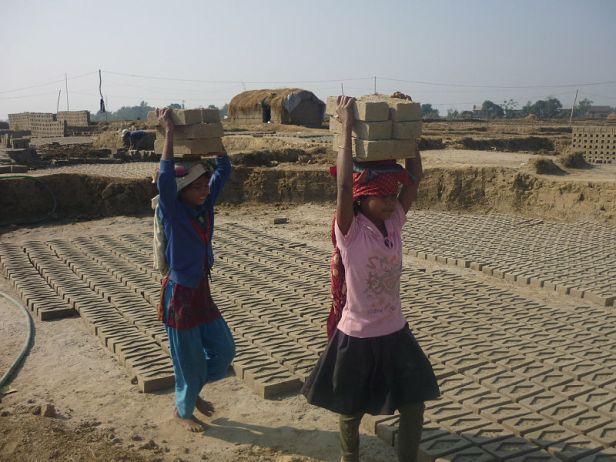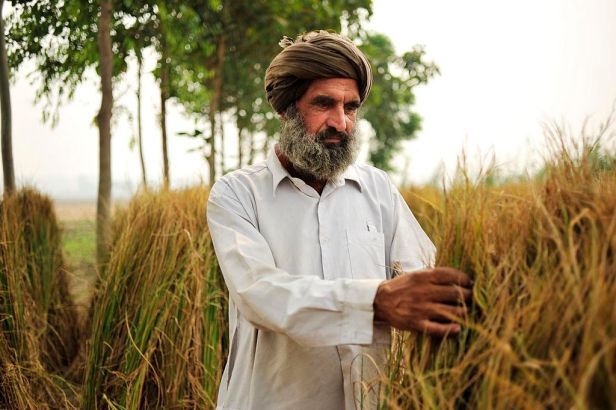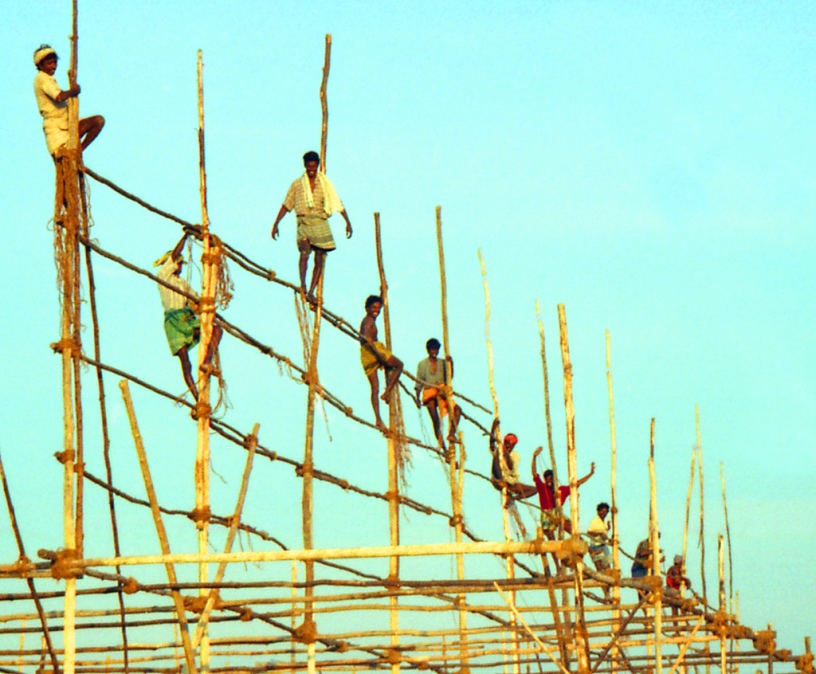Politicians (of all kind) are programmed to promise a drastic change in the status of their country during their term in governments. This is true for economic advisors, industrial lobbies and other reform advocates. Recommendations of magic pills would enhance their acceptance in politics and media. However I am going to outline a not-so-optimistic scenario of India’s future in the next two decades. This is done with a specific purpose. People including policy-makers should not waste their energy on magic pills and quick-fix solutions. Instead, there should be much more realism in the discussions on the future of the country, and a greater focus on those fundamental barriers which are against its economic and social progress.
By progress, I do not mean the transformation of India into a developed country like those in North America, Western Europe or in East Asia. I have only modest targets in mind. The infant mortality rate of the country should be around 12-15 per 1000. There should not be more than 10 percent of people who live in absolute poverty. The sex ratio of the country should reflect gender parity. Birth rate should come down to 2 – 1.8[1] per woman. Almost 90 percent of teenagers (of 18 years and above) will have 10-12 years of schooling experience. On the economic front, there should be many more jobs in the manufacturing sector to absorb those who complete school education. India’s progress, on the basis of even these minimal indicators, could be slow and take a couple of decades if we do not address certain fundamental constraints. However as an Indian citizen, I would be very happy if my prediction turned out to be incorrect.
Around 96-97 percent of children who are 6 years old in the country currently enroll in primary schools. However a significant share of them may not complete secondary schooling. This is due to the continuation of dropping out of school in parts of India. Intriguingly, this issue is not going to disappear through the provision of more and better schools[2]. There is a need to encourage sections of Indian society (especially the historically marginalised ones) to use schooling completely and effectively. They should see the benefits of schooling for their children (both boys and girls). The benefits of education derived by others (say, the upper castes) may not convince them. In the absence of such an encouragement, the share of population which does not complete school-education may not decline drastically, and they may continue to seek livelihood in the already crowded agricultural sector or look for jobs in informal sector. This will work against the reduction of poverty in India.

When a significant share of teenagers, especially girls, does not complete secondary schooling that may reflect in a number of demographic indicators. Birth rate will continue to be high. The current rates of 3-4 in rural areas of most populous states may take much more time to decline. Hence the population will continue to grow in India, especially in those states/regions which currently encounter severe problems of underdevelopment. If girls don’t get secondary schooling, that would make the assimilation of healthy habits and hygienic practices in society (which determines infant and maternal mortality rates) slower. Secondary education (especially that of mothers) is important for strengthening parental interest in the education of their kids. The progress on all these indicators could be slow in India.
Though the completion of schooling is necessary, it is not adequate. Even with the completion of school education, the majority of girls may not be in industrial work-force due to the prevalence of gender-discriminatory social norms. This is evident from those southern states which have enhanced enrollment and retention in schools. The continuation of lower work-participation among women has three kinds of impact. First, the parents have to ensure the financial and social security of their daughters through the marriage, which essentially means `buying’ such security from the marriage `market’. Many factors may determine the `price’ in this market including gendered notions on who is beautiful and who is not. This can lead to not only those problems related to the dowry but also the persistence of a sex-ratio which is biased against woman. Some parents may not want to have daughters fearing that they would have a very difficult life ahead.
Secondly, the number of dependents of a wage-earning member increases when women don’t work outside home. This would create a situation wherein many households continue to be financially vulnerable. Thirdly, when three-fourths of the half of Indian population (women) are not in the workforce for paid employment, the share of workers in India is considerably lesser than that in China or countries in south-east Asia. This withdrawal from paid employment and the lower educational achievements of population would dampen the growth of (lower-end) manufacturing in India.
This phenomenon may persist for a number of years after we could address these two problems – poorer schooling achievements of the population and lower female-work-participation rate. This is due to the scale economies in lower-end manufacturing. China and countries in east and south-east Asia, which have developed manufacturing well ahead of India, and which have already cornered a significant share of global markets would continue to have an upper hand even after India could make available a comparable size of work-force with appropriate educational achievements. Building up manufacturing in India to absorb the growing population of workers (probably by catering to the domestic market or by taking advantage of the increase in wages in the competing countries due to the improvement in development indicators there) may take many years if not decades.
The current situation of the country also makes certain reforms very difficult despite having a pro-reform government in which one party can take decisions on its own without depending on coalition partners. When this party came to power, it decided not to go ahead with the foreign-direct-investment in retailing. In a situation where not many new jobs are created as part of economic growth, no government in a democratic society is in a position to go ahead with reforms which are perceived (correctly or incorrectly) to be harmful to the livelihoods of people at large. There could be a similar reluctance on the part of different state governments to reform labour-markets (that is, to make the `hire and fire’ of workers easier) – the strategy advocated by economic advisors to accelerate the pace of industrial development within the country. Hence there could be a political reluctance to implement reforms, if these are needed to achieve faster economic development of the country.
Governments are compelled to meet short-term needs reducing the funds available for those projects which are required for the healthier development of the economy. The distress in Indian agriculture is well known. One way to address this problem albeit partially (other than reducing the share of population depending on agriculture through the spread of education and encouraging people to move towards industrial and service activities) is to increase public investments in agriculture. Farmers do not get remunerative prices for their products in certain places and seasons even when consumers have to pay a much higher price. The market for farm products in the country is highly fragmented due to the lack of adequate investments for warehousing (cold storage), transport and so on. However governments are compelled to spend a greater part of the public resources allocated to agriculture for the waiver of farm loans and the provision of different kinds of subsidies (by creating problems in the economy and allocation of private resources) and hence there is not enough money available for investments in public infrastructure which are useful for farmers. Governments of all kind, including the one led by Narendra Modi find it difficult to get out of this compulsion, due to the prevailing situation in the economy and society.

There is a deepening of democracy within the country. Even those historically marginalised groups have started mobilising themselves and asserting their rights. However, I am doubtful, whether these are adequately oriented to address those fundamental problems facing the country. Though Dalit activism has taken root within the country (and that is a very important development), and of late it takes up issues of marginalisation in higher education, the continuation of the under-achievements in schooling and restrictions on women are not discussed widely. It is obvious that the opportunities for higher education and the benefits of reservation (in jobs and education) are not available to those who do not complete schooling. Though the current government has taken up a few programs for behavioural change, say to avoid open defecation or to encourage the schooling of girls, there is not enough willingness in the political domain to bring about changes in social norms to encourage women to participate in paid employment. For all these reasons, India may continue with its current ills of underdevelopment in 2030 or afterwards.
[1] This is closer to the replacement rate which may keep the population size stable in the long run. The total population will grow for some more years after achieving a birth rate of 1.8 due to the momentum created by the reproductive activity of adult population.
[2] The details of this argument can be seen in Santhakumar, V. Gupta, N. and Sripada, R. (2016) Schooling for All in India: Can We Neglect the Demand? Delhi: Oxford University Press
Feature Image Source: https://www.flickr.com/photos/ryanready/5213835620

“People including policy-makers should not waste their energy on magic pills and quick-fix solutions. Instead, there should be much more realism in the discussions on the future of the country, and a greater focus on those fundamental barriers which are against its economic and social progress.”
While realism is necessary, so is idealism, to provide even incremental momentum for changing the reality of today, tomorrow.
LikeLike
your views gives an insight to the problems of education and utilization of the young work force we have with us. I wish our leaders and advisors take cognizance of such challenges and provide a suitable solution. This is possible as we have strong leadership and all of us have a feel good factor and such changes are achievable.
The hard reality for the underprivileged who attempts to get educated is not very encouraging considering the social taboo, traditions and the mindset of the facilitators at the grass root level. So long as such attitude prevails in the society our progress would be muted.
LikeLike
Yes, Governments think that Market oriented development is the best one and they are ignoring capability enhancement, developing schools and public health along with social security. on population I think more than number of people inequity is responsible for marginalization of some as one person makes huge property land and others struggle for some. Malthusian case has been criticized on examples of Nordic countries or even North america where population is less but exploitation of resources is much more then underdeveloped countries.
LikeLike
The article has explored the paradigm of development created by political party among the citizen and its shallowness. The government and policy makers had channelized much of their energies in attaining the small output to lure the citizens but little has been done to work towards the larger outcome for an inclusive development. This current government though has criticized the the policies of Nehru’s and congress but at the core and philosophical level were quite identical to them, as Nehru has celebrated big dams as temples of Modern India similarly the current government is also projecting smart cities as the future of India, but we also need to evaluate what will lead to what, will smart cities automatically take care of the issues of education, health and livelihood or addressing this issues first will take us a step closure to an inclusive society which would be smart as well as developed in its own terms and not as per the definition of development set by the west.
The Article has rightly raised a point that the policy makers needs to define what is development first and instead of giving magic pills and quick-fix , needs to take care of the basic parameters such as health, education and livelihood, for an instance the article has also put forward an valid point on how much of the money is being spent as an tax waiver for the farmers ( Corporate tax waiver can also be considered) and thus it has left the government with little money in building an infrastructure to support farmers, which would have been a preventive measure to ensure that the farmers had safety net.
LikeLike
Thanks! Excuse my naivety, but why are labour market reforms (making hire and fire easier) a necessary way towards progress (or did I misinterpret it?). The developed societies in Europe all have very un-reformed labour markets in that sense – firing an employee might have a high cost to the employer. So, would not accelerated industrial growth by such labour market reforms lead us to a different equilibrium – whether or not such an equilibrium exists in the combination of “reformed labour markets” and “human progress” is a question too, isnt it?
LikeLike
Wow, didn’t expect that if im honest.
LikeLike